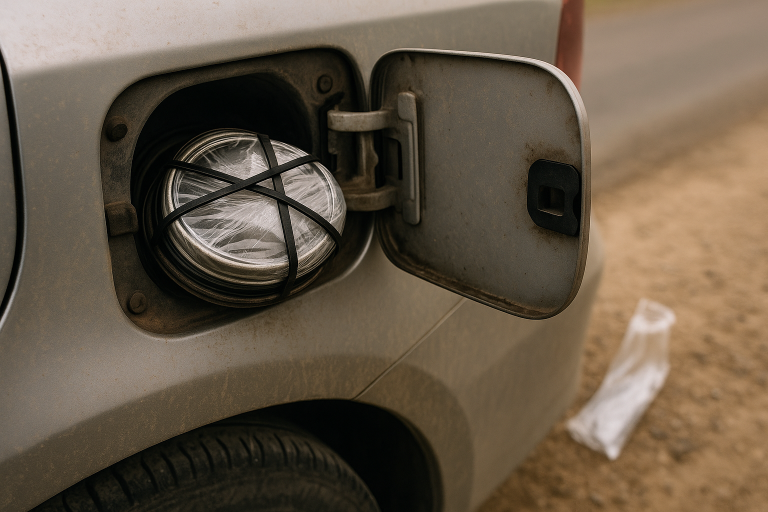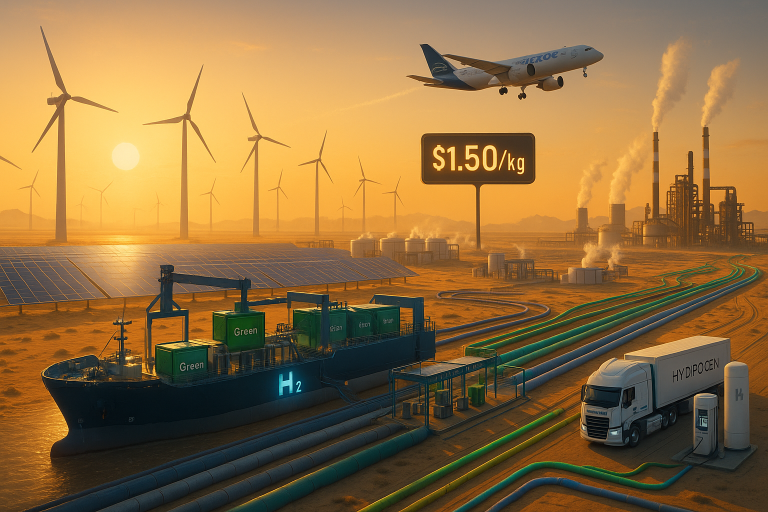Toyota’s Project Hilux Declares War on Gasoline, Hybrids, and EVs
The automotive industry is on the brink of a technological earthquake. Toyota has made a bold declaration with Project Hilux , an all-new hydrogen fuel cell-powered pickup truck that diverges sharply from the global rush toward battery-electric vehicles (BEVs). This audacious move underscores Toyota’s long-standing belief that hydrogen—not just lithium-ion batteries—will play a critical role in the future of transportation, especially for heavy-duty applications.
The Heart of Project Hilux: Engineering a Hydrogen Beast
At the core of Project Hilux lies cutting-edge hydrogen fuel cell technology, designed to deliver performance, durability, and zero-emission capability without compromising the ruggedness synonymous with the Hilux name.
Zero-Emission Muscle
- A polymer electrolyte membrane fuel cell stack consisting of 330 cells—adapted from Toyota’s Mirai sedan—powers the vehicle.
- It produces 134 kW (182 DIN hp) and 300 Nm of torque , directly routed to the rear wheels.
- Three high-pressure hydrogen tanks are integrated into the ladder frame, ensuring structural integrity and ground clearance.
- A lithium-ion battery pack mounted above the load deck stores excess energy generated during operation for additional power delivery when needed.
Performance Edge
- Refueling takes only 3–5 minutes , dramatically faster than typical BEV charging times.
- Offers a 600 km range on a single fill-up, making it ideal for long-haul operations and off-grid missions.
- Maintains the Hilux’s legendary payload capacity and towing strength, which many BEVs compromise due to heavy battery packs.
Extreme Durability
- Prototypes have retained the diesel model’s 700mm water-fording depth , essential for off-road utility.
- A new fabric-reinforced timing belt has been introduced—a first for Toyota—to enhance reliability in harsh environments.
Table: Hydrogen Hilux vs. Conventional Hilux Specs
| Feature | Hydrogen Hilux | Diesel Hilux (2.4L) |
|---|---|---|
| Power / Torque | 134 kW / 300 Nm | 147 HP / 400 Nm |
| Refueling Time | 3–5 minutes | 5–10 minutes |
| Emissions | Water vapor only | CO₂, NOₓ |
| Range | ~600 km | ~800 km |
| Payload Capacity | Uncompromised | Up to 1,000 kg |
Toyota’s Hydrogen Gambit: Strategy Beyond Hype
This isn’t just a concept or a PR stunt—it’s part of a broader, calculated strategy by Toyota to position itself as a leader in multiple low-carbon mobility pathways.
Multi-Pathway Carbon Neutrality
- Toyota rejects the notion of a single “winner” in the decarbonization race. While competitors like Tesla and Volkswagen double down on BEVs, Toyota is pursuing:
- Hybrid electric vehicles (HEVs)
- Plug-in hybrids (PHEVs)
- Synthetic e-fuels
- And now, full-scale hydrogen fuel cell vehicles (FCEVs)
“We’re not replacing gasoline with electric. We’re replacing both.”
— Toyota European Executive
Prototype to Production
- Ten prototypes have already rolled out of Toyota’s UK manufacturing plant.
- These units are undergoing rigorous real-world testing across diverse terrains.
- Five will be showcased at the Paris 2024 Olympics , despite criticism over hydrogen’s current reliance on fossil fuels for production.
Infrastructure Endgame
- Recognizing the lack of hydrogen refueling infrastructure as a major barrier, Toyota is spearheading initiatives such as Hydrogen Factory Europe .
- The goal is to scale up hydrogen production and distribution networks by 2030 , aligning with expected policy changes and green energy incentives.
Why Hydrogen Trumps Batteries for Trucks
Toyota is targeting key weaknesses in BEVs that become more pronounced in commercial and heavy-use scenarios:
Workhorse Practicality
- Battery packs add significant dead weight, reducing payload and towing capacity.
- With hydrogen, the Hilux retains its 3,500 kg towing ability and maintains optimal weight distribution for off-road performance.
Arctic to Sahara Ready
- Unlike lithium-ion batteries, hydrogen fuel cells operate efficiently in extreme temperatures—from sub-zero Arctic conditions to desert heat.
- This makes hydrogen ideal for global deployment where environmental variability is a constant challenge.
Cost Curve Crash
- Toyota forecasts a 30% reduction in fuel cell costs by 2026 , driven by advances in materials and manufacturing.
- If realized, this could make hydrogen trucks more cost-competitive than BEVs, particularly in commercial fleets.
The Roadblocks: Skepticism and Stations
Despite its promise, hydrogen still faces serious challenges:
“Greenwashing” Backlash
- Critics argue that most hydrogen today is gray hydrogen , produced using fossil fuels, undermining its green credentials.
- Toyota’s Olympic demonstration has drawn fire from scientists who say the company is promoting hydrogen before the supply chain is clean.
Chicken-Egg Infrastructure Problem
- Without widespread refueling stations, adoption remains limited.
- Toyota’s counter-strategy is to develop modular fuel cell systems that can be used across sectors—including buses, boats, trains, and even stationary generators—creating cross-industry demand and incentivizing infrastructure investment.
The Bigger Picture: Is This the End of EVs?
Far from it—but Toyota is reshaping the playing field.
Hybrid Hilux Bridges the Gap
- Already on sale is a 48V mild-hybrid diesel Hilux , featuring regenerative braking, multi-terrain control, and enhanced fuel efficiency.
- This keeps dealers competitive while hydrogen tech matures.
2025 Redesign Looms
- Spy shots suggest a refreshed Hilux Travo set for a late-2025 debut.
- While retaining hybrid and diesel options, the redesign is reportedly being engineered with hydrogen integration in mind.
Corporate Fleet Focus
- Although Toyota plans to release an electric Hilux, its primary focus is on corporate and government fleet sales .
- For private owners seeking independence from charging grids, hydrogen offers unmatched flexibility.
Water vs. Watts
Project Hilux is more than just a new vehicle—it’s a manifesto. By marrying one of the world’s most enduring workhorses with next-generation hydrogen technology, Toyota is challenging governments, automakers, and consumers alike to rethink what zero-emission mobility can look like.
As battery EVs struggle with charging deserts , weight penalties , and temperature limitations , Toyota is betting that hydrogen will win the day for speed, range, and versatility. In the end, the question may come down to a simple truth:
What if the future isn’t electric—it’s hydrogen?
And the answer might just flow from a faucet.





